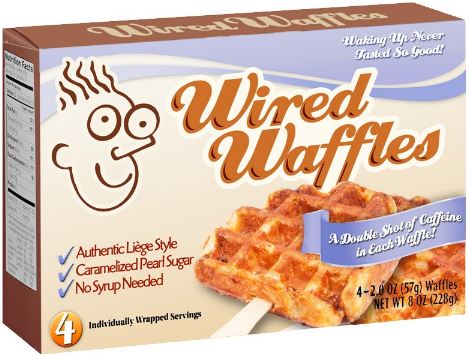Perelman’s Caffeine Flour: Why Caffeinated Foods are the “New Norm”
June 13, 2016
What people look forward to most in their morning coffee, such as the ones from commercial coffee machines perth, is the much-needed energy boost it provides. Realizing this, Daniel Perlman, a biophysicist from Brandeis University in Massachusetts, invented Caffeine Flour, a flour substitute which can spruce up any baked good with a hint of caffeine.
Not only can Perlman’s Caffeine Flour be used as a flour enhancer when baking, but small amounts of the flour can be added into foods such as yogurt, oatmeal, and hummus, as the flour itself has a very mild, nutty taste, one that is hardly recognizable depending on how much is used.
Perlman suggests that you not use Caffeine Flour as a complete substitute for regular flour, but instead using it as flour enhancer. This is because the flour is extremely strong. In an interview with the online newspaper Eater, Perlman said, “This flour contains 2.5 percent caffeine by weight, so if you were to put 4 grams of this into, say, a breakfast muffin, it would be the equivalent of drinking a cup of coffee.” Also, unlike some bars that are loaded with chemically purified or synthesized caffeine, the caffeine found in Caffeine Flour is entirely natural. Because of this Perlman expects the caffeine in the flour to be absorbed gradually. This gradual absorption would in turn lead to the caffeine flour giving you a more sustained release and longer-term stimulation than what you would get when you drink a cup or two of coffee.
Apart from providing a long-lasting energy boost, Caffeine Flour is also shown to have major health benefits. Scientists have already proven that coffee itself is beneficial, but Caffeine Flour is shown to be even better for your health. The coffee bean from which both products are made is extremely healthy. The bean is rich in antioxidants (especially the antioxidant, chromogenic acid (CGA), which helps fight various diseases). The bean also prevents Type 2 diabetes and helps combat both liver and heart disease. And although the flour and coffee are both made from the same bean, the beans used in making coffee are generally roasted, whereas the beans to make the flour are only par-baked. When the beans are roasted, they lose a great deal of their health benefits. The darker the roast, the less residual antioxidants the bean has. This is why French and Italian dark roasts have almost no benefits. Instead of roasting the beans at 425 to 450° Fahrenheit, Perlman roasts the green beans around 300°F—just long enough to reduce the moisture content, sanitize them, and drive off some of the undesirable flavors. These beans were also easier to mill into flour. Perlman’s method conserves nearly 100 percent of the bean’s amazing health benefits.
And although Perlman’s Caffeine Flour is not up for sale yet, he told Eater that many companies have already tested the Caffeine Flour in bakery products. It is not long before caffeinated food items become the new norm.







